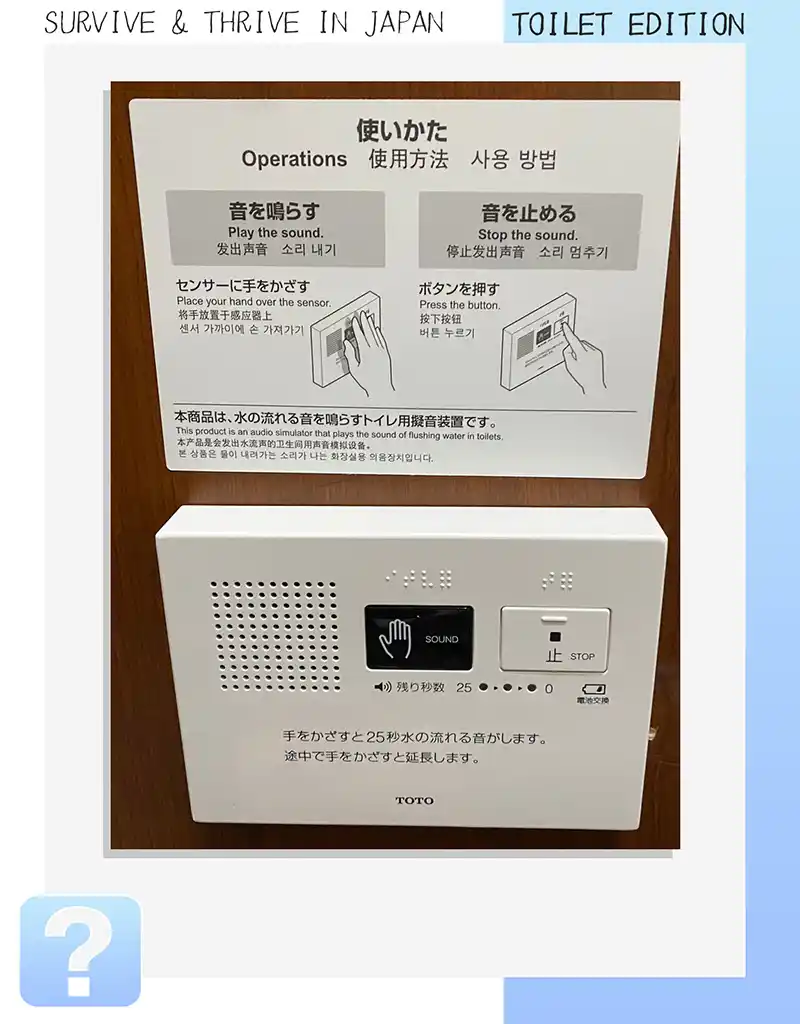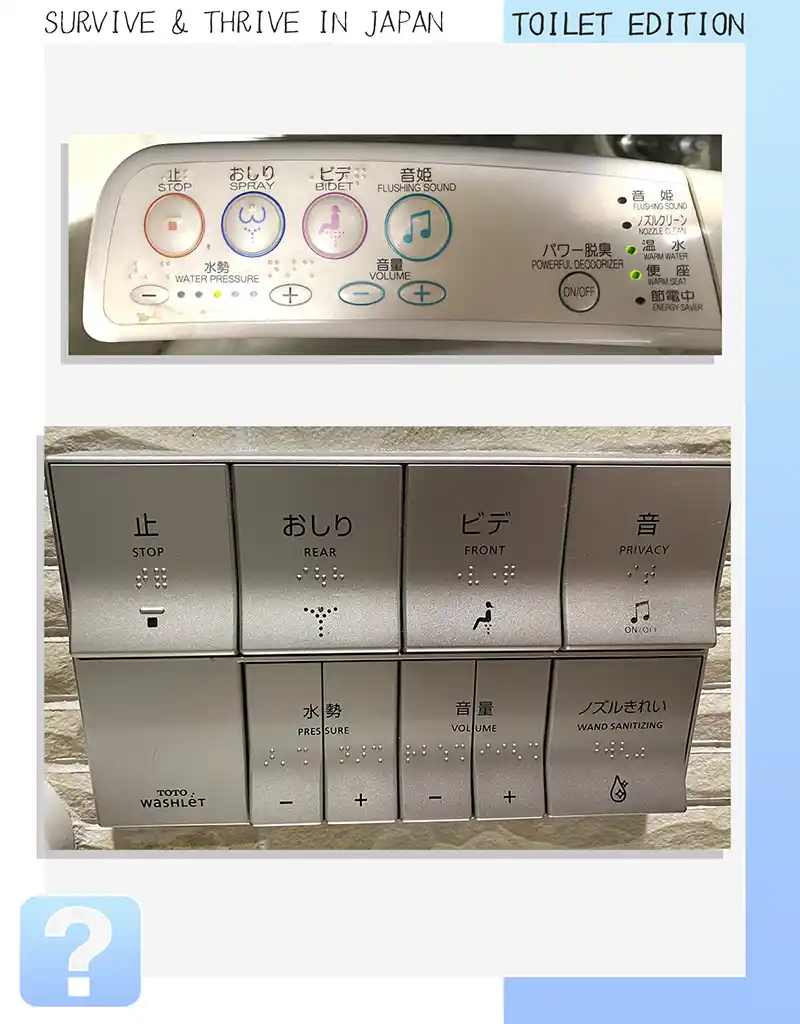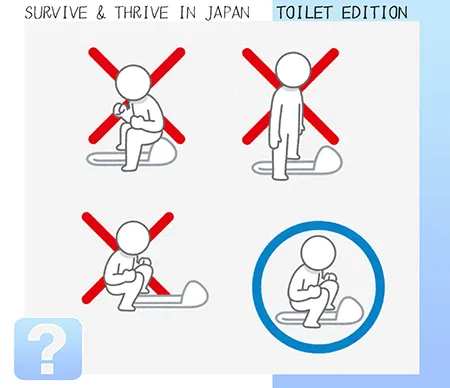Using Toilets in Japan: The Good, the Bad, and the Kanji.
Using Toilets in Japan: The Good, the Bad, and the Kanji.
Most people assume that something as simple as going to the bathroom or using a toilet is going to be simple anywhere they go in the world.
But not all toilets or bathroom culture is created equally.
We’ll start with a list of Japanese toilet / bathroom dos and don’ts, and then give you more information in detail.
Japanese Toilet Dos:
- Do carry a small towel or handkerchief! Public toilets often don’t have a way to dry your hands
- Do make sure it flushes if it’s an automatic sensor
- Do learn how to use a Japanese-style toilet (hint: you need strong thighs and core muscles!)
- Do learn the kanji for toilet / restroom
- Do learn the kanji for the gender toilets you use (some places only have kanji markers on the doors)
- Do learn to read the kanji / understand the usage panel of a bidet (to avoid traumatic spraying incidents)
- Do understand the buttons in the public restroom stalls (one’s for sound so the next stall won’t hear your business, the big red one will call emergency personnel)
- Do use the toilet slippers in restaurants and places you’ve taken your shoes off to enter
Japanese Toilet Don’ts:
- Don’t wear the toilet slippers back into the izakaya / restaurant / room!
- Don’t press the wrong buttons (on the bidet or in the public restroom)
- Don’t use the Japanese style toilet Incorrectly
- Don’t use a Japanese style toilet if you have mobility issues
- Don’t use an ostomy sink as a urinal
- Don’t stand up if the water from the bidet arm is still streaming
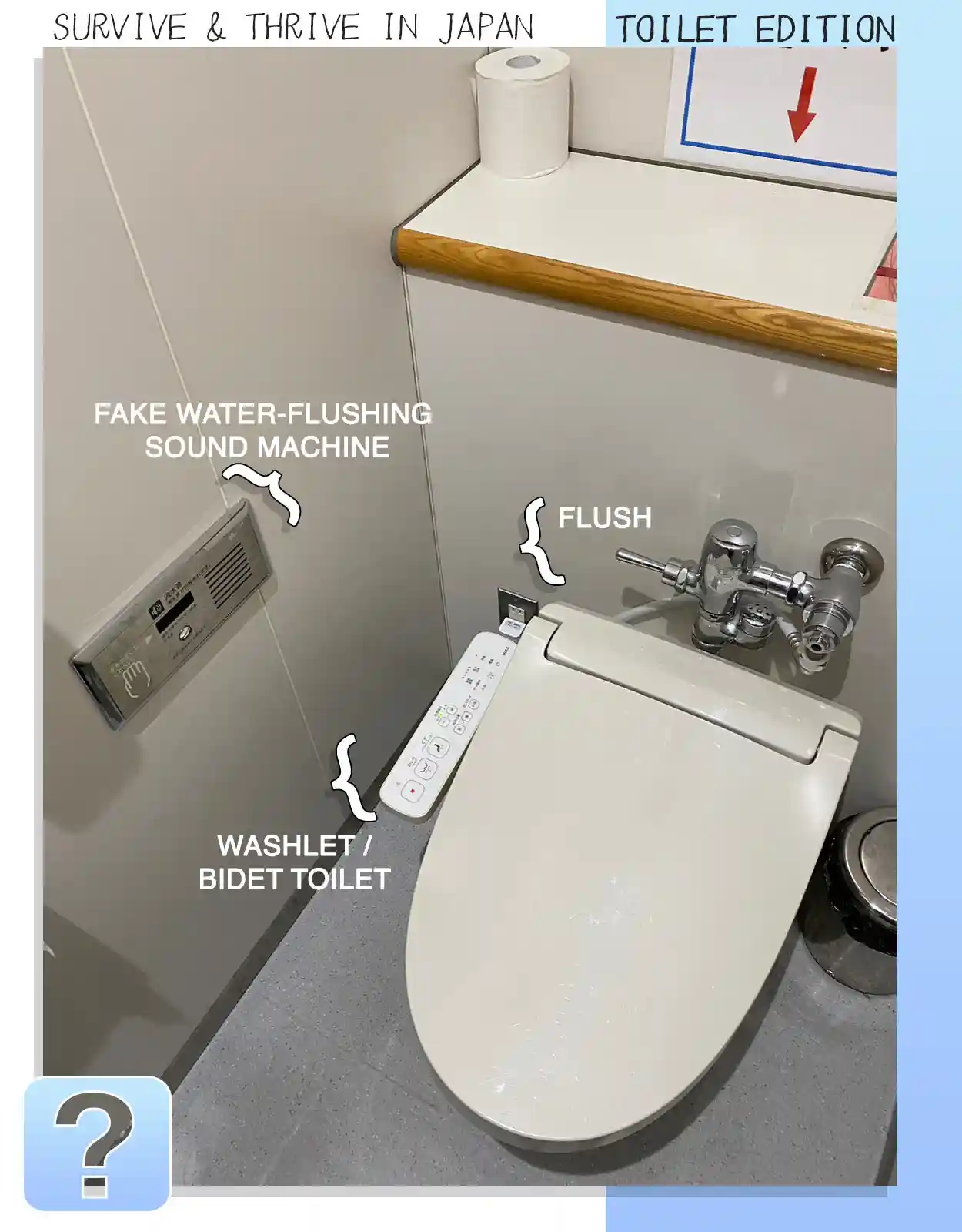
Japanese Public Toilets :
Japanese public toilets around town and in train stations are generally very clean and safe.
They almost never have paper towels so carrying either pocket-tissues, a small hand-towel, or a handkerchief (that can usually be bought in any train station kiosk or convenience store) is a must.
People are generally shy about being heard going to the bathroom in public, so to prevent wasting water by using the sound of the flushing to cover the various sounds we make in toilet stalls, most public stalls have a little noise machine that emulates the flushing sound to let you go to the bathroom in peace without worrying about having your farts accidentally overheard.
Some have English writing on them, some don’t, here are a few examples of toilet sound machines you may come across.
Washlets and Bidet: Forget the paper and get extra clean
Japanese “washlets” or what we might call “bidets” or “bidet toilets” involve a learning curve if you’re not familiar with them.
They generally have a setting for butt cleaning, a setting for front cleaning (bidet), a drier function, possibly an odor removal function (or a turbo odor removal function even!), and some have a water strength and heat function.
How they work: You choose which part you want rinsed, front or back, and a little spray arm comes out to that position and water-picks your privates for a set time, and then you either wipe the water off with toilet paper, or use the drier function to air dry your bits.
IMPORTANT: If you stand up while the water jet is on, water will go EVERYWHERE including on you. This is one of the most frequently reported “traumas” visitors to Japan report having experienced.
Many of these superpowered toilets in public have English on the functions menu, many private locations don’t, so understanding the images on the buttons and which one is STOP is advised.
How to use a Japanese-style toilet

Japanese-style toilets are becoming increasingly rare, but they can still be found in some older facilities. Even for Japanese people, it's not as common to use a Japanese-style toilet as it used to be, so it's not unusual to see a Japanese-style toilet sitting empty in a crowded bathroom.
To use a Japanese-style toilet, you don't sit on the toilet itself. Instead, you squat down over it. To do this, stand in front of the toilet and face the round protrusion. Squat down so that your feet are shoulder-width apart and your knees are bent. Your body should be in a straight line from your head to your heels.
As you squat, be careful not to let your bottom hang over the edge of the toilet. This can cause splashback.
Once you're done, flush the toilet by turning the lever on the tank in front of you (general done by foot) or activating the motion sensor.
Tips for using a Japanese-style toilet:
- If you're not used to squatting, or you’re drunk or wearing really high heels, these can be a real challenge.
- If you have any mobility issues, you may want to use a Western-style toilet instead.
- Be sure to flush the toilet after you're done.
Japanese Toilet Slippers: The Bane of the Tipsy in Izakaya
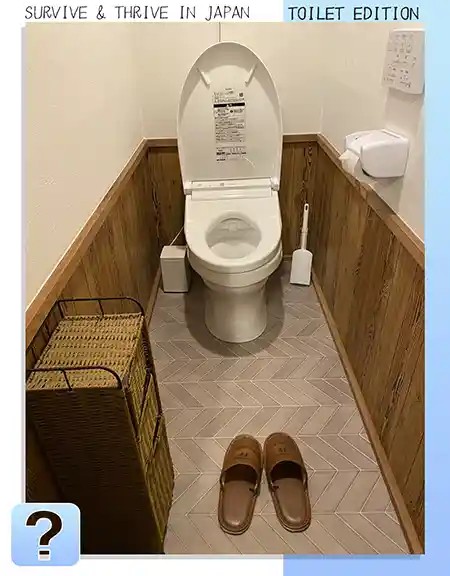
Toilet Slippers: For Toilet Use Only!
Everyone knows that in Japan, shoes aren't worn inside homes. What you may not know is that you’re going to be talking your shoes off in all wa-shiki rooms in Izakaya and eateries as well.
But nobody wants to go to the restroom barefoot or in their stockings or socks.
That’s where toilet slippers come in.
When you visit a home or a washiki (Japanese style tatami room etc.) you’ll see special toilet slippers that are very much NOT house slippers, something you might also have access to.
Toilet slippers are ONLY for the toilet.
Put them on when you enter the toilet, and remember to take them off when you go back into the room or establishment or you’ll have Izakaya staff chasing after you to remind you.

